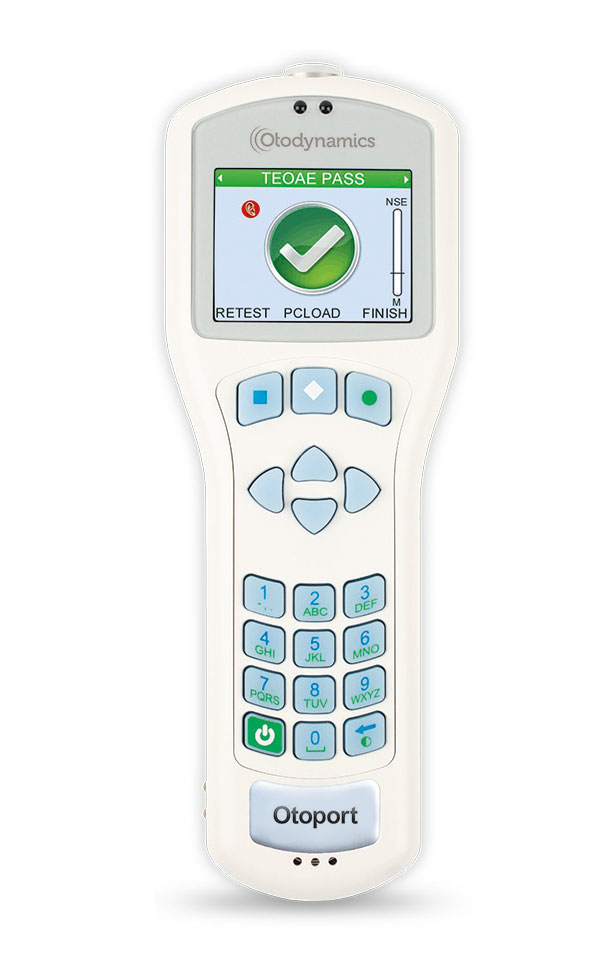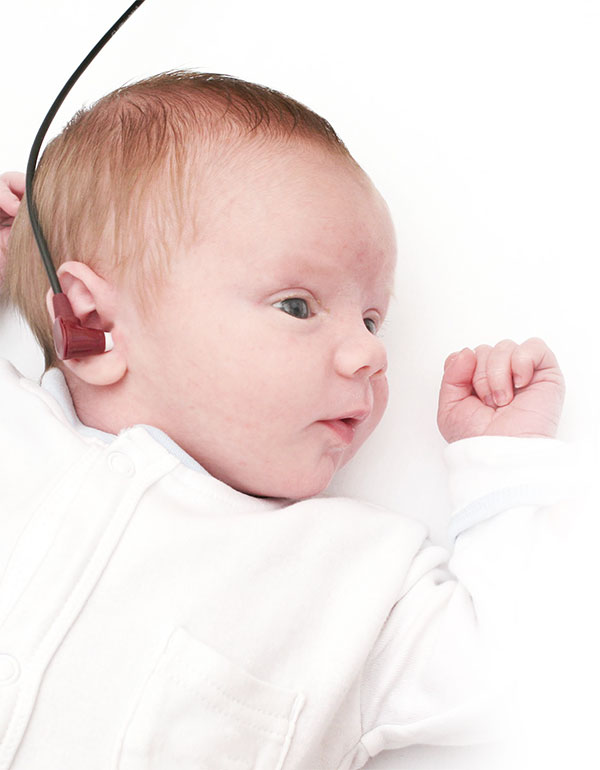Hearing screening in newborns
In my practice, I offer hearing screening for newborns with the so-called otoacoustic emissions. A detailed ENT examination is also carried out as part of the hearing screening.
Information on hearing screening in newborns
What are otoacoustic emissions?
Otoacoustic emissions (OAE) are sound waves that are generated and emitted by the inner ear itself. These emissions can be measured using special measuring devices, so-called otoacoustic emission measuring devices, and serve as an indicator of the functionality of the inner ear. Otoacoustic emissions occur when the hair cells in the inner ear are activated by sound stimulation and in turn produce sound waves. These emissions are particularly useful in diagnosing hearing disorders and monitoring hearing, particularly in infants and young children who cannot express themselves verbally.
Are positive otoacoustic emissions a sign of normal hearing?
Yes, positive otoacoustic emissions are an indication of normal hearing organ function. When the inner ear is activated by sound stimulation and otoacoustic emissions are subsequently produced, this indicates that the hair cells in the inner ear are functioning and capable of detecting and processing sound waves. Therefore, otoacoustic emissions are often used as a test of hearing ability and can be very useful in diagnosing hearing disorders. If positive otoacoustic emissions are present, hearing can be assumed to be normal.
Are negative otoacoustic emissions a sign of hearing impairment?
The absence or decrease in otoacoustic emissions can indicate a hearing impairment. Otoacoustic emissions are normally generated and radiated by the inner ear when sound stimulation occurs. If no or only low otoacoustic emissions can be measured, this indicates that the inner ear does not respond properly to sound stimulation, which can indicate a hearing impairment. Therefore, otoacoustic emissions are often used as a diagnostic test for hearing disorders. If no otoacoustic emissions can be measured, this can indicate damage to the hair cells in the inner ear, which are responsible for processing sound waves. However, the path to the inner ear is often blocked by fluid in the middle ear or earwax in the ear canal, for example, so that the otoacoustic emissions cannot be detected. An ENT examination is then recommended in any case.


How is the result to be assessed?
Positive otoacoustic emissions (positive newborn hearing screening) are a sign of normal inner ear hearing function. In the case of babies, attention should also be paid to normal reactions (e.g. startle at loud noises, attention when spoken to). If these are missing, a new check by the ENT doctor is required.
The otoacoustic emissions (examination technique used in newborn hearing screening) are a fast and reliable examination method for determining the function of the inner ear.
After an acoustic stimulus, a healthy inner ear emits an inaudible response. This response can be registered with a small probe in the ear canal.
Positive otoacoustic emissions indicate an intact middle and inner ear, negative otoacoustic emissions do not allow any further statement. However, this measurement alone is not sufficient for a reliable and conclusive diagnosis of the hearing ability. The measurement must be viewed as a piece of the puzzle in the picture of the entire hearing assessment.
How much does the newborn hearing screening cost?
Newborn hearing test (OAE measurement)
Inspection of the ears, inspection of the nasal cavity and inspection of the mouth and throat including measurement of otoacoustic emissions (OAE)
After the treatment you will receive a fee note. If you wish, I can support you in submitting the fee note to your health insurance company! Payment can currently be made in cash or by card (Maestro, V PAY, Mastercard or VISA).